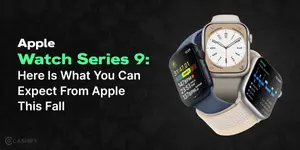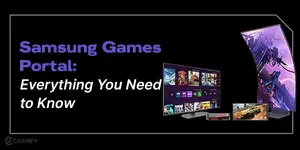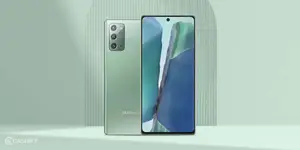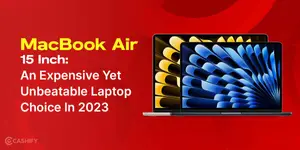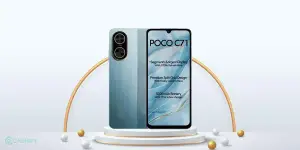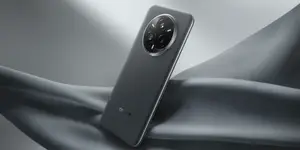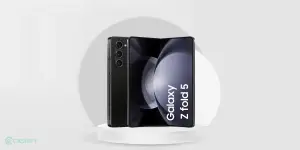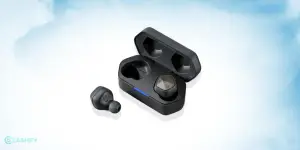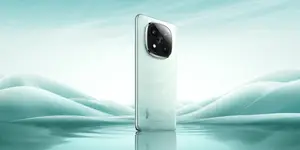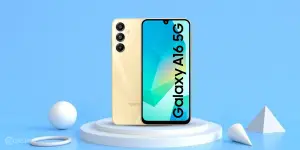USB cables. They’ve become so synonymous with electronics that it’s unlikely that almost anyone alive today has never seen one. We charge our devices, transfer files, and occasionally, stream media from it, or use it in more novel ways if you’re big on DIY. This neatly packaged informational article by Cashify is about to educate you on USBs in a relatively short read. We’re going to start with what’s a USB cable, exactly, and proceed to their types, and finally, other novel USB types and variants available in the markets.
Let’s dive in!
Also read: How To Connect Smartphone To TV: 3 Swift Methods To Get It Done
What is a USB Cable?
The term USB, which stands for Universal Serial Bus, refers to the most common type of port: the rectangular USB, also known as USB A. USB ports are found on a wide range of devices, including phones, computers, and gaming consoles.
The USB connection was developed in the mid-1990s to standardise peripheral port connections. This allows peripheral devices, such as printers and keyboards, to connect to a broader range of computers and hosts, rather than just a few with specific receptacles.
There are numerous USB types available today, but the primary function of all USBs remains the same: data and power transfer. Over time, new versions have been released to improve transfer speeds and power output.
Also read: Should You Buy OnePlus 9 in late 2021 or Early 2022?
How Do USB Cables Work?
When you open a USB cable, you’ll notice four different USB wire colours: white and green for data and red and black for power. The positive wire, which carries 5 volts, is red, and the negative wire, also known as the ground wire, is black.
Each USB connection (USB cable type A, B, C, micro, and mini) has a pinout system, which are small metal strips inside the connector that provide access to each of these wires and their capabilities.
Depending on the USB Protocol, there have been several different USB cables and iterations over the last 25 years. The USB began with version 1.0, which transferred data at a rate of up to 12Mbps and was released in 1995. The most recent is USB version 4, which can transfer data at speeds of up to 40Gbps.
Also read: 6 Things To Keep In Mind Before Buying A Smartwatch In 2022
USB Upstream & Downstream
It is critical to ensure that USB connections are made correctly and that they can follow the necessary international protocols. To accomplish this, USB remote devices must have an upstream connection to a host. In turn, hosts can connect to remote devices via downstream connections.
To prevent misconnection, upstream and downstream connectors are not mechanically interchangeable. This ensures that they only connect in the required direction, eliminating the possibility of problems like erroneous loop connections at hubs like downstream ports connecting to another downstream port.
Although not common, USB A to USB A cables are occasionally used to connect USB devices with an A-style Female port to a PC or another USB device for data transfer between two computers.
Also read: Jio Mart, Realme Watch, Realme Smart TV, Realme Buds Launched in India – Tech AajKal E24
This type of A to A cable does not connect two computers or a USB hub between two computers, especially because both computers would supply 5V to the power lines on the cables, potentially causing both power supplies to develop hazardous issues.
Connecting them may result in irreversible damage to the computers and may even pose a fire hazard. Do not succumb to the temptation to connect computers in this manner.
USB Connector Types
The connectors have evolved alongside the USB concept. Data transfer speeds have increased, as has the demand for smaller connectors.
The Protocol designated that a USB cable could have one of two configurations: “A” or “B” connectors. The USB C Type was later introduced to provide a more robust system with improved data transfer performance.
Also read: Oppo Watch 2, Enco Air Smart Edition, Enco Play TWS Earphones Launched: Prices, Specs
As a result, there are numerous USB connector types available, including USB Type A, USB Type B, Mini-A, Mini-B, Micro-A, Micro-B, and Micro-AB. Types A and B connectors have four pins, while Mini and Micro-A and B connectors have five pins.
USB Type-A connector
The USB A-Type connector is most likely the most familiar. Found on host controllers, computers, memory sticks, and a variety of other items. Used on hubs, and for “downstream” connections.
The USB A connector is flat, rectangular, and larger than other types. Held in place purely by friction, it is very easy to connect and disconnect. However, this is not ideal if the equipment will likely experience vibrations.
The male version of the connector is the USB Type-A plug. The female connector or receptacle is sometimes called a socket, more commonly known as a port.
The female connector or receptacle is the host, such as a computer, whereas the male is the inserted port, like flash memory, mouse connectors, keyboard connectors, and the like.
Also read: Classic Pokemon Games Return As Pebblemon For Smartwatches
In terms of their capabilities, these connectors are colour coded. USB 3.0 Type-A connectors are frequently, but not always, blue – look for the plastic lip within the connector itself. Although USB 2.0 Type-A and USB 1.1 Type-A connectors are frequently black, this is not always the case.
USB Type A & B
A smaller, second connector type known as Type B quickly gained popularity. This one has a slightly different pinout layout.
The USB B connector is almost square in shape, but it has a slight bevel on the corners on the top ends.
The B type connector, like the USB A connector, relies on friction to keep the connector in place. The USB B Type connector is an “upstream” connector used only on peripheral devices. As a result, the majority of USB applications necessitate the use of an A to B cable.
Also read: Logitech Zone True Wireless and Zone Wired Earbuds Launched: Price and Specifications
These USB connectors allow power and ground connections to be made before the signal lines connect, allowing power to travel safely.
USB Mini Connector
With the shrinking of many electronic devices, even the Type-B connector became too large. Thus, the USB Mini connector came along, which is now in use in many cameras and mobile phones where space is sparse. There are two versions available: USB mini-A and USB Mini-B.
Both the Mini-A and Mini-B USB mini connectors provide very compact connectivity while also providing a robust connector solution. Mini-A and Mini-B plugs are approximately 3 by 7 mm in size.
USB Micro Connector
With space more limited than ever on today’s modern Smartphones, an even smaller connector solution comes to save the day.
The USB micro connector is available in both USB Micro-A and USB Micro-B versions.
The Micro-USB plugs are about half the width and half the thickness of their Mini-USB counterparts. As a result, they are used in much thinner electronic devices.
Also read:Best Quick Reply Messages For WhatsApp Business You Can Send
The dimensions of the micro-A connector are 6.85 by 1.8 mm, with a maximum over-mould size of 11.7 by 8.5 mm. The micro-B connector measures 6.85 by 1.8 mm, with a maximum over-mould size of 10.6 by 8.5 mm.
A Micro-AB receptacle (socket) is also available, which can accept both USB Micro-A and USB Micro-B plugs.
Many organisations have adopted the USB Micro connector as a standard. The Open Mobile Terminal Platform, or OMTP, has endorsed Micro-USB as the standard connector for mobile device data and power.
Also, the International Telecommunication Union, ITU, announced that it had adopted micro-USB for its Universal Charging Solution, allowing chargers to all use the same connector and allowing standardisation and the use of a single charger for multiple types of equipment, such as phones from different manufacturers.
Mini and Micro USB connector pinouts
There is a wide range of USB connectors available to enable connectivity in a variety of situations. The various connectors also ensure that devices connect in the correct direction. Even though the number of USB connectors and cable types is growing, finding the right cable for connecting the right items is usually not a problem.
Also read: Realme 4K Google TV Stick To Launch in India During Flipkart Big Billion Days
USB Type C
The USB Type-C connector is a new universal connector for desktops, laptops, tablets, smartphones, and other devices. It’s designed to feature a slim, reversible design that will work equally well with any type of cable that supports USB 3.1 Gen 2 data rates of 10 Gbps.
The USB Type C connector will eventually replace the USB Type A and Type B connectors fully in the future, especially after the European Union’s push to standardise USB connectors.
Supporting up to 100 watts, and its design is reversible. That means that it inserts in any orientation without the hassle of worrying about which side is up.
USB FAQs
What Does ‘OTG’ Mean?
USB On-the-Go, or “OTG,” is a specification that allows two USB devices to communicate with one another. This is where one “Device” USB, can serve as a “host” for another USB peripheral. For example, using a USB OTG cable, users can connect a USB mouse (the peripheral/device) to their smartphone or tablet (the new host) and use it just like a desktop mouse. This interaction works with a fifth pin on the USB connection.
Which USB Cables Support Fast Charging?
Docking stations, charge hubs, and computers all have dedicated ports called “fast charge ports”. There are also USB cables designed specifically for fast charging. These ports and cables frequently provide more power to charge mobile devices such as smartphones and tablets faster than a standard USB cable and adapter. Check the product specifications for full charge speed specifications.
Also read: How To Sideload Any App On Amazon FireStick? Quick Guide
Do USB Ports follow Colour Codes?
The colour of the inner plastic part of the connection is a common way to identify the USB version. A white USB port denotes USB 1.0, a black USB port denotes USB 2.0, and a blue USB port denotes USB 3.0. It’s important to note that some manufacturers choose not to use colour-coded indicators, so always check the packaging and online specifications.
How Long Can a USB Cable Be?
USB 3.0 cables have a maximum length of 3m, while USB 2.0 cables have a maximum length of 5m. It is possible to use an active extension USB cable to extend the signal’s range. USB 2.0 cables can extend to a maximum length of 25m, while USB 3.0 cables can extend upto 18m.
What’s the Material of USB Cables?
The majority of cables are made of tough PVC-Grade plastic. This safeguards everything on the inside, including the high-quality copper wiring that provides excellent conductivity. Some cables feature external reinforcement and port connector ribs for longer durability against wear and tear.
These reinforcements may be synthetic fibre, rubber, silicone, and rarely, metallic fibre.
Where Can I Recycle USB Cables?
Technology waste is extremely harmful to the environment. Recycling your old USB wiring is the most effective way to conserve precious resources and reduce toxic waste in landfills.
Charities such as WEEECharity are the best places to recycle your USB cables. Charities and other organizations like these recycle old cables responsibly, and some even offer to collect your old electronics for you, just like Cashify.
Also read: Using UPI App? 5 Safety Tips You Must Follow.
That was all you probably needed to know about USBs! You’ve just uncovered a tonne of info in a short while! Did you already know all that we shared here? Did you learn something new and decide to buy a cable to try something new? Let us know in the comments below!
Want to encash your old smartphone? Let’s make it worth something again. Sell phone online, or recycle old phone! A quick sale and eco-friendly recycling are provided by Cashify.



